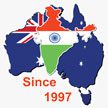Osaka Japan: Attending the G-20 meet in Osaka Japan, and meeting the Indian Prime Minister Narendra Modi, Prime Minister Scott Morrison did if not the unthinkable but certainly a first for an Australian prime minister and uniquely established the universal appeal Modi has. Scott Morrison took a selfie with the Indian Prime Minister and tweeted it with the caption- “Kithna Acha He Modi”.
Scott Morrison
✔@ScottMorrisonMP
Kithana acha he Modi! #G20OsakaSummit
Morrison’s Hindi tweet prompted Narendra Modi to reply in his mate’s tongue.
“Mate, I’m stoked about the energy of our bilateral relationship!” wrote PM Modi on Twitter.
Narendra Modi
✔@narendramodi
Mate, I’m stoked about the energy of our bilateral relationship! @ScottMorrisonMP
The tweet made headlines around the world, particularly in India and triggered a fierce twitter war among the Modi fans and detractors. Some even suggested Scott Morrison was actually doing the match making, appealing to the eligible ladies to look at Modi, who is still single.
Nirmaan @NeatSpeaking
Replying to @ScottMorrisonMP @narendramodi
Scott Morrison was telling all the beautiful women çause Modi is still single… there is nothing political or religious about his tweet. He just wants Modi to finally settle down in life. Very noble thought and what a platform to help Modi @ScottMorrisonMP
Nirmaan @NeatSpeaking
Replying to @ScottMorrisonMP @narendramodi
Pun aside, Modi is what he India loves today. Once he was refused Visa by the US, now he was sitting in the front row of G-20 meet and meeting world leaders as their darling! He has consigned Congress to pol dustbins.
@narendramodi @PMOIndia
It made the twitter war complete the circle – from sublime to ridiculous. But that did not discourage the twitterati who continued to attack and prop up each other.
Morrison was not suggesting anything to eligible ladies, far from it. Morrison only had one and one agenda and that is Australia’s bilateral relations with India, particularly trade with India which is good but can really get better with India exhibiting signs of being perhaps the most lucrative market in the years to come. India’s 1.3 billion people with more 350 million being the young, happening and earning crowd, there is an ocean of consumers for the Australian business to tap into. That is exactly what Scott Morrison had in mind when he took that selfie and tweeted it.
And I would like to say “well done Scomo”, with many more episodes of the same warranted. This is particularly so when we are living in an environment where the US is putting protectionist policies in place and is having real issues with China – another important market for Australia which may come under pressure.
According to the department of foreign affairs and trade, “with trade wars, powerful neighbours, and the odds on a recession narrowing within the next two years, considering Indian market entry has never been more mission-critical for Australian business”.
- In 2018, Australia’s total exports to India grew 10% to A$22.3 billion. India ranked number five in Australia’s export destinations.
- Two-way trade increased by a similar percentage to A$30.4 billion, making India Australia’s sixth largest two-way trade partner.
- Australian investment in India increased almost 12% to A$15.6 billion, slightly ahead of India’s investment in Australia at A$15.1 billion.
However, according to the Australian Bureau of Statistics, in 2016–17 (the latest year for which there is data), only 2,087 exporters engaged with India, compared to 7,214 for China.
The new Modi government in 2019
Although Australia went to polls on May 18 but the DFAT hawks had their eyes firmly set on India as the largest democracy in the world went to polls in seven phases from 11 April to 19 May 2019 to constitute the 17th Lok Sabha (House of Representatives). The counting of votes took place on 23 May, and on the same day the results were declared and Modi’s government was returned with a thumping majority for the next five yeasrs.
Incumbent Prime Minister Narendra Modi’s Bharatiya Janata Party (BJP) won 303 seats, further increasing its substantial majority, and the BJP-led National Democratic Alliance won 353 out of 545 seats.
In the BJP’s first term, the government undertook structural reforms such as the introduction of a goods and services tax (GST) and bankruptcy laws; and micro-economic changes such as lifting caps on foreign direct investment, reducing petroleum subsidies, promoting health insurance and a relentless focus on digitisation and infrastructure.
India’s already very large population will surpass China’s within the next decade. Population growth, currently at 1.1%, is expected to continue until mid-century, reaching an estimated 1.68 billion in the 2050s. Though the number of children has peaked, the workforce will continue to expand. According to Bain & Co, the growth of the Indian middle class will lift nearly 25 million households out of poverty. In addition, India will have 700 million millennials and Gen Z (those born between 1995 and 2009) consumers, who have grown up in a more open and confident country.
According to the World Bank’s Ease of doing business index, India moved into the top 100 for the first time in 2018 at #77 (while Australia sits at #18) and that gives a lot of hope for a lot more openings for Australian businesses which is the main reason Scott Morrison finds Modi so good.
R. VeuGopal

